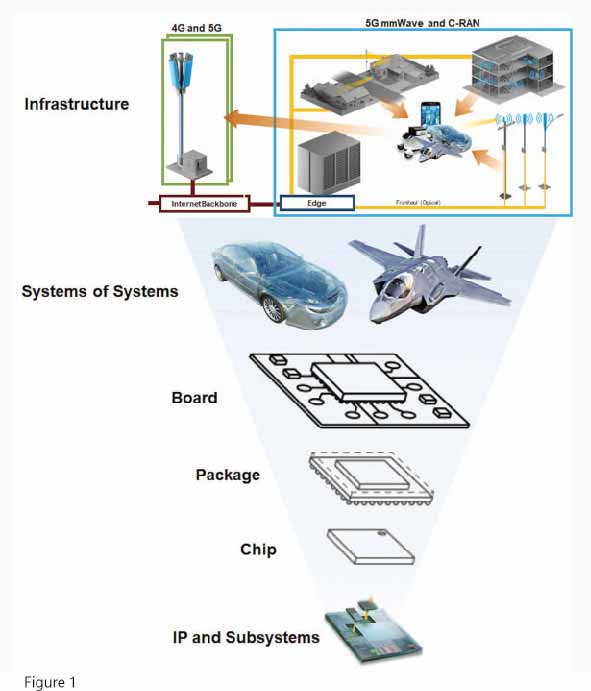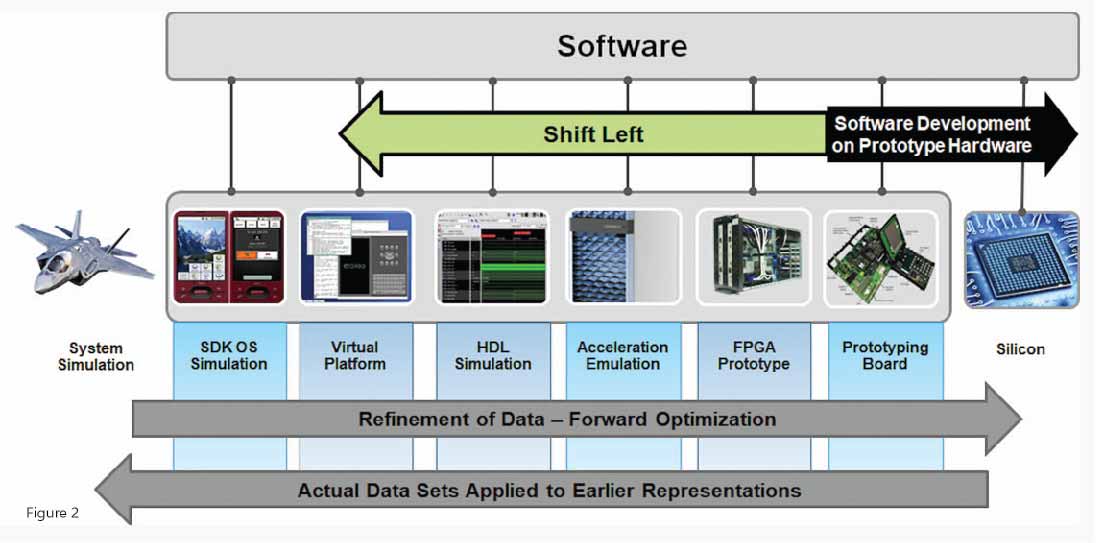
The complexity of systems has grown at a breathtaking pace over the past 20 years. What may look to an individual design team like a system almost certainly turns out to be a component in a more complex system.
Aerospace is no different. A fighter jet like the F-35 was developed by an international partnership (Australia, Canada, Denmark, Italy, the Netherlands, Norway, Turkey, the United Kingdom and the United States) and integrates 200,000 parts from 1,600 suppliers using 3,500 ICs and 200 distinct chips with more than 20 million lines of software code
Yet even this jet becomes just a component of the next more complex system – the air traffic and communications network. We have reached an era of design that requires ‘systems of systems’ considerations. At a time when alliances for next generation future combat air systems (FCAS) are forming, the question of how to design systems of systems in an efficient and timely fashion could not be more pressing.
The Tempest programme is backed by the UK, Italy and Sweden, while an alternative FCAS programme is supported by Spain, France and Germany. Just as in the consumer market, this will become a race for time-to-market, design efficiency and product quality. Success will depend on the ability to apply commercial design practices that augment the use of physical prototypes with development methods, allowing much earlier co-development of hardware and software and effectively shifting its first point of integration to the left.
Co-development co-operation
In the world of consumer products, one finds specific blocks of semiconductor IP, like processors, peripherals and buses, at the bottom of the design chain. They form the basis of licensable sub-systems that, in turn, become components in system on chips (SoCs). SoCs follow Moore’s Law with regard to miniaturisation – at least they have done until recently – and they become components on PCBs in products that get integrated into, for example, aircraft systems.
Productivity improvements keep design costs affordable through tools and re-use enabled by the electronic design automation (EDA) industry. This trend has also been prevalent in the automotive application sector for years, with changing dynamics as to who defines requirements. Software development has moved upstream in the design chain more, towards the OEMs, where proper hardware abstraction layers, to enable design chain interaction, have been made available with standards like Autosar.

Figure 1 illustrates the structure of such a system of systems.
In commercial design, it is common practice to strive for the earliest possible integration of hardware and software. For instance, well before the actual silicon of an SoC is available, operating systems like Android and Linux can be brought up on hardware based emulation and prototyping. This can be six to nine months early for significant savings on a 15- to 18-month schedule. With techniques like virtual prototyping, developers can verify software functionality even earlier using more abstract representations of the hardware, steepening the bug detection curve even more.

Figure 2 illustrates the effect of earlier hardware software integration throughout the development cycle and outlines how to extend this even further into the domain of software development kits (SDKs) and system simulation of more extensive parts of the system.
While the use of several different hardware representations seems excessive, it often is a necessity, as no engine satisfies all requirements for software development. Virtual platforms are fast, functionally accurate and easy to debug. What they lack is the fidelity often required for architectural analysis and the development of more timing-critical software. In contrast, register transfer level (RTL) simulation offers the most advanced hardware debug capabilities but it is too slow for software development beyond bare metal drivers.
Emulation and prototyping go hand in hand, balancing the debug insight and the time to model bring-up which is faster in emulation with the superior model speed of prototyping. Users set up the different engines in hybrid combinations to achieve even more fine-grained balancing of model speed and model fidelity. Once developed and verified, system simulation and the other instances of hardware software integrations serve as ‘digital twins’ of the actual physical product.
Digital twins are the digital representation of the current state of a manufactured product or system at any given point in time. They often go together with digital threads as the digital record of all states of a manufactured product or system from conception to disposal.
Users apply real data from the actual product to its digital twin to check for defects and can use system analysis to reduce issues in the physical product, while executing real data in the digital twin to tune performance and predict maintenance issues, monitor the impact of mechanical wear, front loading reliability analysis.
During the development cycle, digital twins for verification are digital representations of a product or system that is under development, representing a functionally-correct, predictable and reproducible representation at the appropriate level of fidelity to perform verification, performance analysis and system validation tasks.
Issues identified in the real product are more easily reproduced and debugged in simulation, emulation and prototyping. It is easy to predict that whoever turns out to be the winner of the next FCAS race will have employed commercial best practices in aero defence applications. System simulation, prototyping and emulation before fabrication will be a must.
—— https://www.electronicsweekly.com/









